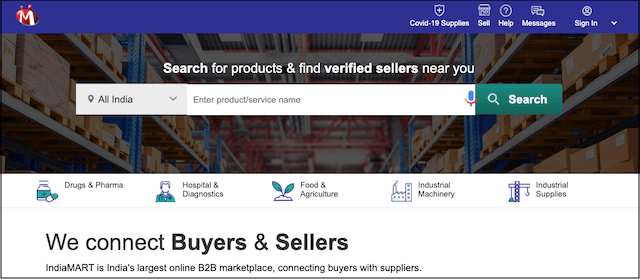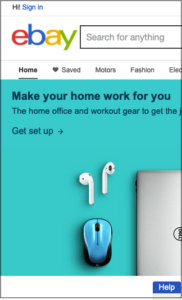Even before COVID-19, the eCommerce industry was growing rapidly. Now, with several industries in India not functioning because of the pandemic, some companies have adopted eCommerce business models.
If you want to start selling online or just want to change the eCommerce business model you’ve been using, you are at the right place.
In this article, I’m going to explain the types of eCommerce business models and how to choose the best one.
Related: 5 tips for adding an eCommerce shop to your brick and mortar business
There are basically 4 eCommerce business models
eCommerce is a smart business choice, especially now with shops closed due to COVID-19. Following are top eCommerce business models:
- Business to consumer (B2C).
- Business to business (B2B).
- Consumer to business (C2B).
- Consumer to consumer (C2C).
Now let’s explore each eCommerce business model individually.
1- Business to consumer (B2C)
The business-to-consumer model comes first in the minds of most people when they think about starting an eCommerce business. It is simply a retail sales model where businesses sell products to customers over the internet.
The business-to-consumer model is perhaps the most popular business model of the four.
You will see two types of businesses using the B2C model:
- Companies having only online stores
- Businesses with both online and physical stores
For example, Lenskart sells glasses online and in stores, but Myntra sells products exclusively through its online store.
The subscription business model

Photo: Ashwini Chaudhary on Unsplash
These days, the subscription business model is also becoming popular in the B2C business eCommerce space. In this model, businesses typically create websites that provide resources, and customers pay one-time, monthly or annually to access those resources.
This model is simplest to start, and you can get success quickly if you have unique products, backed with quality customer support.
One example is GeekCrate, which ships boxes once a month to subscribers who love comics, television, movies, gaming and anime.
With GoDaddy, anyone can easily build a fully functional eCommerce website to start selling products online. It comes with powerful selling tools, flexible shipping and payment options, plus step-by-step advice to guide you as your business grows.
Related: 5 eCommerce website templates
2- Business to business (B2B)
The business-to-business model means selling products/services from one company to another.
As compared to the business-to-consumer eCommerce model, getting success in the business-to-business channel is more difficult. This is because businesses often need custom products or services, and the B2B companies sometimes have to produce different products/services for different buyers. So this model is more time-intensive.
It typically needs more startup cash to start a B2B eCommerce company.

However, currently it has been noticed that B2B companies are selling products online like never before worldwide. In India too, B2B eCommerce is turning corners.
A good way to venture into business-to-business eCommerce is to start an online marketplace. These are websites where sellers can find buyers of their products or services. IndiaMART is one such online B2B business in India.
Here are some B2B eCommerce business ideas:
- Online marketplace for industrial equipment
- Online marketplace for textile delivery
- Offering eco-consulting to companies
- Starting niche PR firms
- Online marketplace for IT hardware supply
Buyers in B2B settings typically need more information than shoppers in B2C settings. So, you need to build a good eCommerce website to ensure success in the B2B eCommerce business model.
3- Consumer to business (C2B)
In this eCommerce business model, consumers sell goods or services to businesses. Though it is the least-discussed eCommerce business model, it is an area filled with lots of opportunities. Upwork and Fiverr are popular examples of the consumer-to-business eCommerce model.
QuickSell is a popular C2C eCommerce marketplace in India. It allows its people to sell their used devices to dealers.
With the C2B model, you don’t have to manage inventory. Also, the startup cost is quite low. This is the reason why this model is picking up these days.
Common blog monetization strategies such as social media influencer marketing also fall under C2B business model. In this case, businesses will actually pay individuals to promote their products or services.
However, to earn money as a social media influencer, you must have large numbers of social media followers to attract businesses to hire you.
4- Consumer to consumer (C2C)
As the name suggests, consumers sell products to other consumers under the consumer-to-consumer eCommerce business model. In this model, sellers and buyers rely on other businesses to carry out transactions.
Businesses or platforms that enable C2C sales tend to charge a small amount from sellers in exchange for allowing them to post their products for selling.
eBay is the most popular example of C2C eCommerce business model globally.

You might think that the opportunities for creating a new C2C platform are limited due to people preferring to use big players, but niche opportunities are always there.
So, you should focus on creating a C2C eCommerce platform for a particular niche.
Though Handikart and Shiprocket Social are creating buzz in the C2C eCommerce domain, C2C eCommerce in India is still in the beginning stage. That would suggest that you can make a splash if you pick the right niche.
However, you must have a sustainable model for your C2C platform. Many companies in this eCommerce domain opened and quickly closed as they didn’t have a sustainable business model.
Which eCommerce business model is the right one for you?
Now, you are aware of top eCommerce business models, you can make a better decision to choose the right one as per your business objective.
Each model has pros and cons. So, you should decide after considering all the essential things. Understanding who your customers are and what you’re capable of play an important role in making the final decision.
Following are some points that you should keep in mind while picking the eCommerce business model:
- Who your customers are (e.g. business, consumer)
- What you are selling
- How you will get your stock (i.e. provided by you or others)
Understanding each of these will help you make the right decision. Best of luck with your venture!





